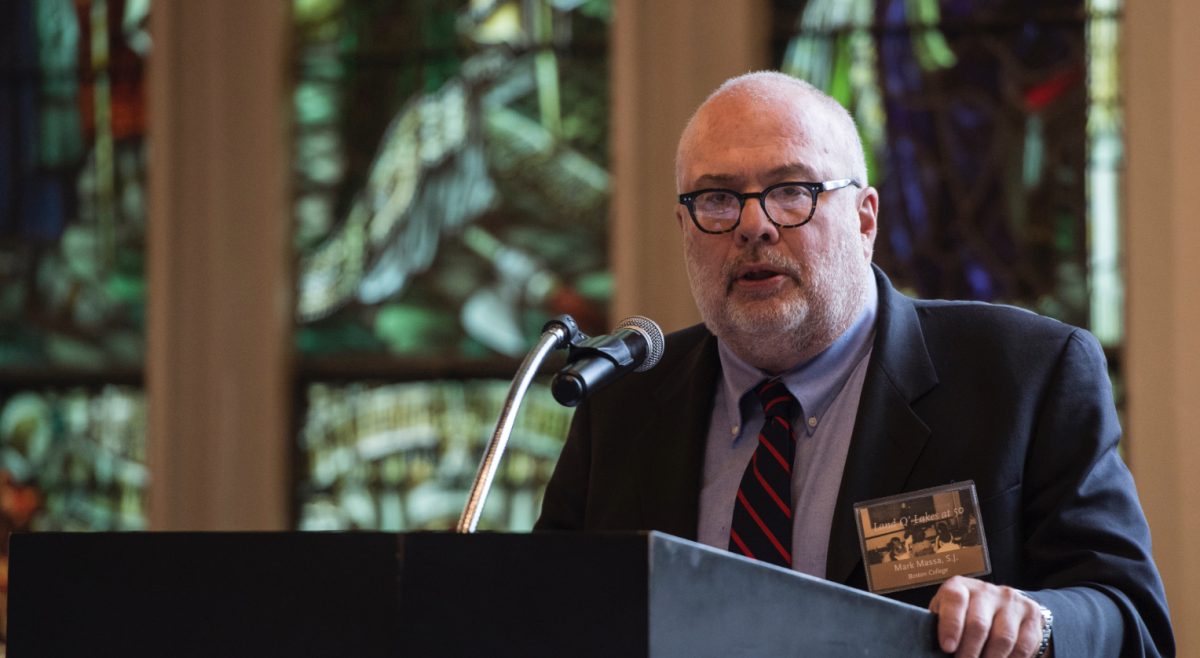The U.S. government is running a federal deficit, expenditures on healthcare are increasing, and the cost of health insurance is exceedingly higher than years past, with trends showing little sign of slowing.
On Monday night, an event co-sponsored by GlobeMed, the AHANA Leadership Council (ALC), and the College Democrats of Boston College titled “A-Z of Obamacare” aimed to address the sources of rising healthcare costs and recent political measures enacted to curb government spending on the healthcare industry.
“If we want to do anything about entitlements, we have to tackle the big three, which are social security, Medicare, and Medicaid,” said interim provost and professor of economics Joseph Quinn to a standing room-only Stokes 195S.
Quinn, who opened the event with an economic analysis of the federal budget and its growing health-related expenditures, said that the deficit will not only continue, but it will become larger with time according to the Congressional Budget Office (CBO). The CBO also forecasts that 17 percent of the entire U.S. economy will be focused on Medicare, Medicaid, and Social Security, in 2040, and 25 percent by 2080.
The federal government currently spends 70 percent of its budget on mandatory payments, or spending on programs mandated by law, and 57 percent of mandatory spending is allocated to healthcare costs-resulting in about 25 percent of the entire federal budget being spent on Medicare and other health expenditures.
Quinn attributed the rising cost of health care to two primary reasons: an aging population and costs exceeding the rate of inflation. He also noted that the U.S. spends 17.7 percent of its gross domestic product (GDP) on healthcare-more than any other country in the world-and overall spending is more than double the amount of the average country listed in the Organization for Economic Co-operation and Devlopment (OECD).
“We have a health cost problem in this country,” he said. “We have a great medical system in this country-if you have health insurance. There’s no place I would rather be sick than here, but we have an extraordinarily expensive healthcare system.”
Following Quinn, economics professor Tracy Regan began her talk with an overview of pivotal transitions in Congress since 1942 that led to the creation of the Affordable Care Act, including the 1965-66 federal initiation of the Medicare and Medicaid programs still in place today.
Regan noted that $2.5 trillion of the U.S. budget is devoted to the healthcare industry, with the average per capita health expenditure costing $8,000 per year and nearly $1,000 on prescription drugs. She also addressed the U.S. spread of health care coverage: employers cover about 48 percent of Americans; Medicaid covers 16 percent; Medicare covers 14 percent; other public and private forms of insurance cover about 8 percent; and 15 percent of the population remains uninsured. The approximately 48 million Americans without health insurance are what the government and health insurers call the “coverage gap.”
“Essentially, these are people that fall in between,” she said. “They aren’t poor enough to qualify for the expansions in Medicaid, and they’re not also benefitting from some credits that the federal government it giving to individuals … so we haven’t really fully covered everyone in spite of the fact that it’s now been determined constitutional that we do have an individual mandate with respect to health insurance [in the U.S.].”
Research economist at the Center for Retirement Research at BC Matt Rutledge closed the talk by addressing how the ACA more specifically affects older, retired citizens.
“The Affordable Care Act basically had two major goals,” Rutledge said. “One was to increase coverage to people, the 48 million Americans that were uninsured … The other goal was the degree to which the forms associated with Obamacare lead to cost growth being controlled.”












